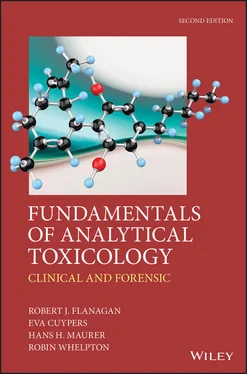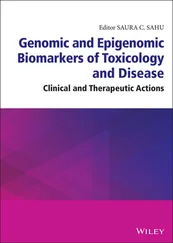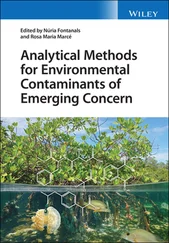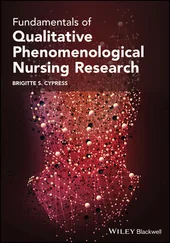1 ...7 8 9 11 12 13 ...27
1.2.3 Ethanol and other volatile substances
Enzymatic methods for plasma ethanol using alcohol dehydrogenase with spectrophotometric measurement of a coenzyme, for example, are available in kit form for clinical chemistry analyzers. GC analysis of ethanol either by direct injection of blood or urine diluted with deionized water, or by static headspace sampling (HS-GC), is also widely used, particularly in forensic work. GC-FID is advantageous because methanol, 2-propanol, and acetone may be separated and measured simultaneously. Methanol poisoning from ingestion of synthetic alcoholic drinks is one of the few causes of acute poisoning ‘epidemics’ and measurement of blood methanol is important in confirming the diagnosis and in monitoring treatment (Section 22.4.1.2). Detection of high concentrations of acetone, itself a metabolite of 2-propanol, and vice versa , may aid the diagnosis of ketoacidosis (Belsey & Flanagan, 2016).
Many more volatile compounds may be encountered in acute poisoning arising, for example, from deliberate inhalation of vapour in order to become intoxicated [volatile substance misuse, ‘glue sniffing’, solvent abuse, inhalant abuse, volatile substance abuse (VSA)]. Some of these volatile compounds have metabolites, which may be measured in urine in order to assess exposure, notably hippuric and methylhippuric (toluric) acids (from toluene and the xylenes, respectively) and trichloroacetic acid (from trichloroethylene). However, most volatile substances are excreted unchanged in exhaled air and therefore whole blood is the best sample for detecting and identifying these compounds (Section 22.4.23).
1.2.4 Trace elements and toxic metals
In order to help diagnose either deficiencies or chronic poisoning with these substances, where alterations from target ranges of only a few μg L –1(parts per billion, ppb, i.e. parts per thousand million) of blood or serum can be important, good accuracy and reproducibility are essential (Wang et al ., 2014). Sample contamination during collection (for example from sample tubes, or even from syringe needles in the case of chromium and manganese) and within the laboratory itself can be a serious source of error. This applies especially to widespread elements such as lead and aluminium.
Modern methods for measuring toxic metals in biological materials ( Table 1.2) vary enormously in terms of complexity, cost, accuracy, and sensitivity. In the case of serum iron, however, reliable kits based on the formation of a coloured complex remain widely used in clinical chemistry. Some techniques (isotope dilution mass spectrometry, neutron activation analysis), on the other hand, are in reality reference methods. Atomic absorption spectrophotometry (AAS) with either flame or electrothermal atomization using a graphite furnace has been employed widely, but is being superseded by inductively coupled plasma-mass spectrometry (ICP-MS).
Table 1.2 Methods for the analysis of toxic metals in biological materials
| Technique |
Mode |
Variant |
| Electrochemical |
PotentiometricCoulometric |
Ion selective electrodes(Differential pulse) polarographyAnodic/cathodic stripping voltammetry (A/CSV) a |
| Spectrophotometric |
Optical Emission (OES) |
Flame emission photometry (FEP) bDirect-current plasma Inductively coupled plasma (ICP) |
| Atomic Absorption (AAS) |
FlameHydride generationElectrothermalCold vapour |
| X-Ray |
Fluorescence |
| Nuclear |
Neutron activationProton activation |
| Mass spectrometric |
|
Inductively coupled plasma (ICP-MS) |
aAlso known as potentiometric stripping analysis (PSA)
bNormally refers to the use of filters to select the emission wavelength – used mainly for potassium, lithium, and sodium assay
ICP-MS is a multi-element technique that can detect and measure isotopes with detection limits of μg L –1to ng L –1. Different isotopes of an element can also be measured. For some elements, the relative abundance of the isotopes depends upon the source of the metal. Therefore, by measuring the isotope ratios of an element such as lead in a sample from a chronically poisoned patient with those found in material present in the patient's immediate environment it may be possible to localize the source of exposure (Gulson, 2008).
Although ICP-MS measures (isotopes of) elements, it cannot differentiate between toxic and non-toxic arsenic species, for example, without a prior separation step (Hsu et al ., 2011). Even then, phenomena such as adduct formation and/or spectral interference from isotopes of different elements can confuse an analysis unless special precautions are taken (Balcaen et al ., 2015; Section 21.4.4.3).
1.3 Provision of analytical toxicology services
If poisoning is suspected and appropriate biological samples have been obtained, the stages in processing analytical work can be divided into pre-analytical, analytical, and post-analytical phases ( Table 1.3).
Table 1.3 Steps in undertaking an analytical toxicological investigation
| Pre-analytical |
Obtain details of the current (suspected) poisoning episode, including any circumstantial evidence of poisoning, and the results of biochemical and haematological investigations, if any. Also obtain the patient's medical and occupational history, if available. Decide the priorities for the analysis |
| Analytical |
Perform the agreed analysis |
| Post-analytical |
Interpret the results in discussion with the physician looking after the patient or the pathologist. Perform additional analyses, if indicated, using either the original samples, or further samples from the patient. Save any unused or residual samples for possible future use |
1.3.1 Samples and sampling
In analytical toxicology, clinical chemistry, and related fields, the words ‘sample’ and ‘specimen’ are used to denote a portion of a body fluid, tissue, incubation medium, etc. obtained under defined conditions. The samples encountered may range from relatively pure solutions of a drug to a piece of putrefying tissue. Liquids, such as blood, oral fluid (principally saliva), urine, and cerebrospinal fluid (CSF), are generally easier to sample and to analyze than solids and semi-solids, which require homogenization or digestion prior to analysis.
Blood plasma or serum is used in clinical work if quantitative measurements are needed in order to assess dosage or monitor treatment as in TDM. Urine is commonly used in qualitative work such as substance misuse screening because collection is non-invasive and the concentrations of many drugs and their metabolites tend to be higher than in blood, thereby facilitating analyte detection. Further aspects related to samples and sampling are discussed in Chapter 2.
1.3.2 Choice of analytical method
In responding to a given analytical problem, many factors must be considered. It may seem self-evident that the method used should be appropriate for the intended analysis. In practice, the choice of method depends on several factors. These include (i) the circumstances under which an analysis is requested (i.e. the question being asked), (ii) the speed with which the result is required, (iii) the sample to be analyzed, (iv) the nature of the analyte (if known), (v) the expected concentration of any analyte(s), (vi) the time available for the analysis, (vii) the apparatus available, (viii) the existence of a validated method in the laboratory, and (ix) the training and experience of the analyst.
Читать дальше












